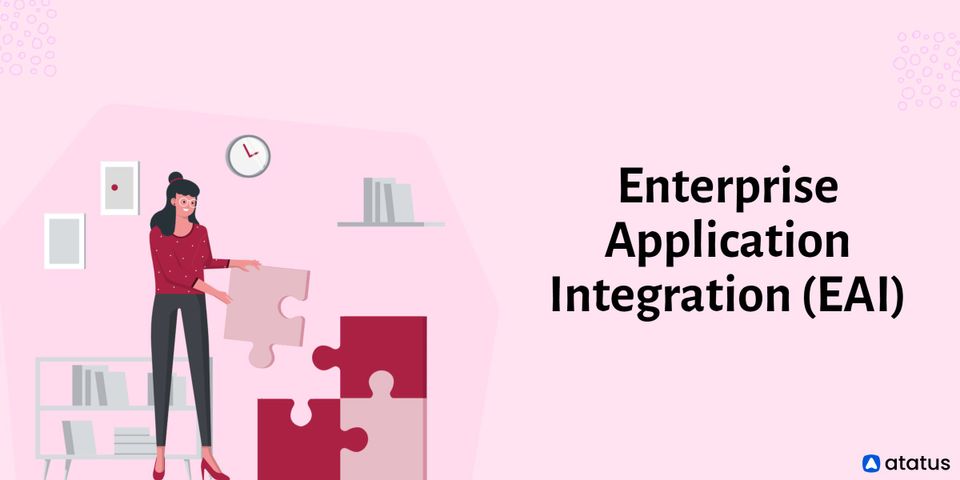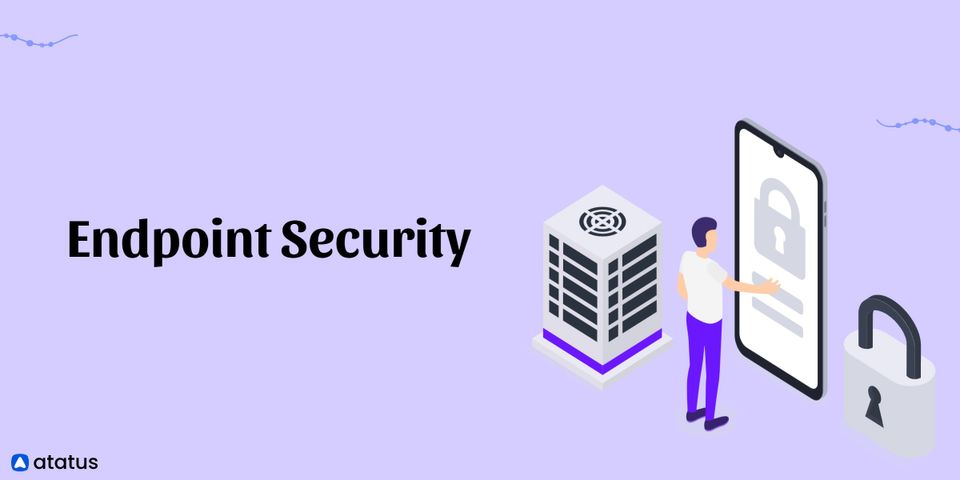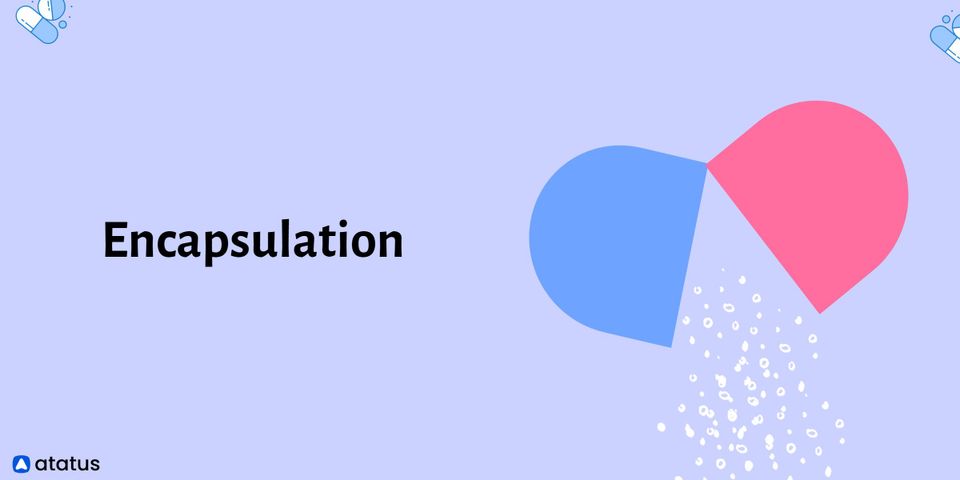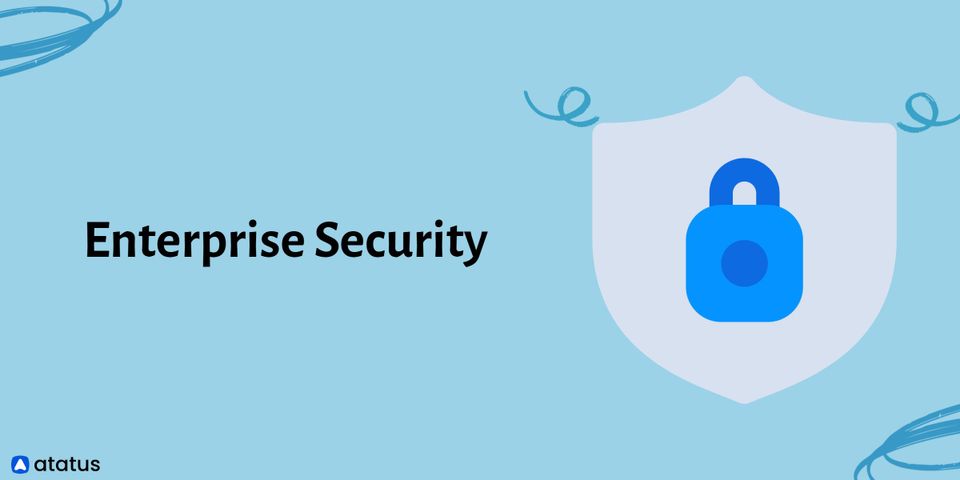Enterprise Application Integration (EAI) is a new way of thinking about how technologies and services are used. It allows small, medium, and large businesses to integrate everything from software applications to hardware solutions, making their entire business process easier.
We will cover the following:
- What is Enterprise Application Integration (EAI)?
- Types of Enterprise Application Integration
- Benefits of Enterprise Application Integration
- Why Enterprise Application Integration is Important?
What is Enterprise Application Integration (EAI)?
The process of merging enterprise applications utilizing IT-enabled technologies is known as Enterprise Application Integration. Enterprise applications are critical to the operations of many modern businesses, and their integration is even more important to streamline all activities and ensure smooth operation at the enterprise level. Applications are connected by a common platform and require data integration in the back end to work properly.
Enterprise Application Integration, commonly abbreviated as EAI, is a system integration strategy popular in the 1990s. The growth of information technologies enabled the EAI technique, which, unlike the earlier ETL approach, focuses on the integration of application-level data (application layer). The EAI strategy has the advantage of being less dependent on the lower levels of an information system, such as operating systems, databases, and, last but not least, linked suppliers.
The existence of universal technical standards, languages, and protocols (XML, BPEL, SOAP, WSDL, JDBS, JMS, CORBA, and others) as well as universal integration technologies and solutions (J2EE, BizTalk, etc.) made the EAI approach to business information system integration conceivable.
Types of Enterprise Application Integration
#1 Data-level EAI
It is the process of moving data between data stores, as well as the strategies and technologies used to do it. This can be described as taking data from one database, possibly processing it, and then updating it in another database. While this may appear simple and basic, in a typical EAI-enabled organization, it could include accessing hundreds of databases and thousands of tables. It could also comprise data processing and business logic applied to the data being retrieved and loaded. The expense of using data-level EAI is one of its advantages.
We don't need to spend money on updating, testing, and deploying the application because we're mostly leaving it alone and not changing code. Furthermore, as compared to the other EAI levels and their related enabling technology, the technology that offers mechanisms to move data between databases as well as reformats that data is relatively inexpensive. The technique you choose and the technology you use are determined by the problem domain's needs.
#2 Application Interface-level EAI
The use of interfaces accessible by custom or bundled applications are referred to as interface leveraging. These interfaces are used by developers to access both business processes and basic information. Developers can use these APIs to group many applications together, allowing them to share business logic and data. The only limits that developers face are the application interfaces' specialized features and functionality.
Packaged applications, which all expose interfaces to their processes and data in a number of ways, are most suited to this type of EAI. We must utilize these interfaces to access both processes and data, extract the information, place it in a format understandable by the target application, and transfer the information in order to integrate those systems with others in the company.
#3 Method-level EAI
It refers to the sharing of business logic that may exist within an organization. Any number of applications can access the way for updating a customer record, and applications can access each other's methods without having to rewrite each method within the corresponding application. Distributed objects, application servers, TP (transaction processing) monitors, frameworks, and simply establishing a new application that combines two or more applications are some of the means for sharing methods among applications and you have two ways to proceed:
- A shared set of application servers, such as an application server, can be created on a shared physical server
- Using distributed method-sharing technology, such as distributed objects, you can share methods that already exist inside of applications
We've been using method-level EAI for years as a means of repurposing application development efforts inside businesses. Due to both human and technological obstacles, we have been mainly unsuccessful. We might be able to do it properly using EAI.
#4 User Interface-level EAI
It's a more primitive technique, but it's still necessary. Developers can utilize their user interfaces as a common point of integration to bundle applications (also known as screen scraping). Mainframe applications that do not enable database or business process access, for example, can be accessed through the application's user interface.
Although many people think of using the user interface as a point of integration as an insecure and archaic technique, the fact is that we've been doing it for years and have ironed out many of the issues such as performance, reliability, and scalability. However, it is not ideal, it may be your only option in some situations. Remember that the ability to use any current system by establishing a dependable point-of-integration is at the heart of EAI.
Benefits of Enterprise Application Integration
Enterprise application integration has a number of benefits, including:
- Control and Connection
The EAI is a fantastic approach to have complete control over your business. This is because, due to its various methods, information management has improved since it provides an overall view, allowing for full awareness of what occurs within it. When you run a business or have a higher position, you may manage and oversee the full network of connections, which includes anything from software to employee information. - Simplifies Business Processes
If there's one area where EAI technologies excel, it's in streamlining and simplifying all business operations. It makes no difference if the IT system is complicated or if there are several asynchronous applications. WSO2's integration process includes long-term activities such as messaging and the interaction between applications and software. They rely on elements as important as middleware for this. - Reduces Costs
The deployment of EAI technologies also helps in cost reduction inside the organization. Integration of old and new software is a good illustration because the former does not need to be deleted, there are fewer investments. - Encourages Information Exchange
The information interchange is substantially greater when the various parts of a company, as well as their respective applications and IT structures, are connected. The data and software used by the organization are accessible to all employees. This eliminates information redundancy, allowing the organization to function more effectively and efficiently. - Reduces Time and Effort
The integration of several software systems allows all corporate information to be gathered in one place, making any employee's job considerably easier. As a result, the amount of time and effort required to complete activities is reduced. Large-scale projects, which often take a long time to complete, can now be completed in fewer points due to EAI. As a result, the organization operates at peak efficiency, and needless chores are eliminated. - Increase of Advantages and Opportunities
It is feasible to improve competitive advantages and opportunities by implementing EAI technology in comparison to the various companies that compete with each other. Business integration is critical for those that use it to gain a competitive advantage. In fact, when a company's IT infrastructure is inadequate, its productivity suffers, and it may suffer significant losses as a result. When EAI technologies are applied, however, problem-solving abilities are improved, and output is not only increased but also made more efficient.
Why Enterprise Application Integration is Important?
Businesses at the enterprise level utilize a diverse set of software. Customer Relationship Management (CRM) may be handled by a single application within the company. Supply chain management would be handled by a separate application. Another would be in charge of inventory management, and so on. While each of these applications is useful in its own right, they are not linked together.
On a daily basis, running a huge organization can be challenging. It is frequently beneficial to break down responsibilities into smaller parts, or modules. It allows for the development of teams or departments with specified duties. This frees executives and decision-makers to concentrate on long-term growth and stability rather than the day-to-day details that would otherwise consume their time.
This means that critical information isn't shared between departments. Rather, it's kept in a limited space and only a few people have access to it, even though other people in the company would benefit from knowing about it. EAI is a comprehensive solution for solving the issue and ensuring improved data exchange across a company's applications.
Conclusion
Enterprise Application Integration can integrate various applications in a variety of ways to meet the specific demands of the company. While EAI is a complicated set of processes and techniques, there is no doubting the relevance of this approach or the benefit it can provide to large businesses.
Monitor Your Entire Application with Atatus
Atatus provides a set of performance measurement tools to monitor and improve the performance of your frontend, backends, logs and infrastructure applications in real-time. Our platform can capture millions of performance data points from your applications, allowing you to quickly resolve issues and ensure digital customer experiences.

Atatus can be beneficial to your business, which provides a comprehensive view of your application, including how it works, where performance bottlenecks exist, which users are most impacted, and which errors break your code for your frontend, backend, and infrastructure.





